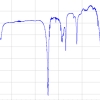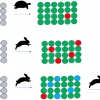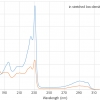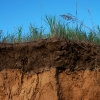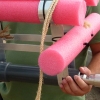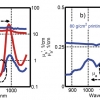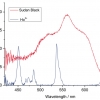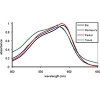Articles
FAIR practice
Following our articles on the FAIR initiative, we now look at some examples of the FAIRification of data handling, collection and archiving.
FAIR enough?
The Tony Davies Column offers a challenge to us all with another contribution on FAIR data, which should be Findable, Available, Interoperable and Readable. It is clearly the way we should all be going, everybody from manufacturers and software developers, through researchers to publishers needs to work together.
Four generations of Quality: into the future
John Hammond describes the start of a new mini-series of column articles and what you can look forward to in the next few issues.
analytica virtual 2020: a new platform in times of contact and travel restrictions
How did a major trade show organiser cope with the disruption of COVID-19? Susanne Grödl, Exhibition Director of analytica for Messe München, gives her experience.
Bill George
Peter McIntyre and Tony Davies remember Bill George, a real Welsh character and educator whose style and charisma influenced many to go on and not only stay in science but to rise to leading positions either in industry or academia.
When to automate spectroscopic data processing
Whilst automation is not a panacea, it can improve the accuracy of manual tasks as well as freeing up our time for more challenging tasks. The authors explore some particular examples they have come across and lessons learned from them.
The UV/Vis+ photochemistry database
The UV/Vis+ Photochemistry Database is a collection of photochemical data and information was started in 1999 and is now an online database updated weekly.
COVID-19: Lock-down and up-skill
With a significant proportion of our regular readership probably under home lock-down, we were wondering if we could help you at this difficult time by pointing out some useful online resources. So, when we finally come out of this pandemic, you could do so better skilled and more up-to-date than when we went in to it.
Is your spectrophotometer still “Pharma compliant”? A review of the new European Pharmacopoeia 10th Edition
The latest edition of the European Pharmacopoeia on ultraviolet and visible spectroscopy has become mandatory as of 1 January 2020, so those of you who need to comply with its requirements will find this of particular interest. Nathan and John pick apart the significant changes with a view to their practical application for instrument users. Cells, control of equipment performance, wavelength accuracy, absorbance accuracy, photometric linearity, stray light and resolution, system suitability and reference materials are all covered.
Planning for EuroAnalysis 2021
Tony and Lutgarde Buydens give us an update on the planning for the major EuroAnalysis 2021 conference, which is being held in Nijmegen, the Netherlands, at the end of August 2021. At this stage, they are keen to gather suggestions from readers on topics they would like to see covered. Groups are also invited to consider hosting their own event under the EuroAnalysis 2021 banner.
Determination of soil organic matter using visible-near infrared spectroscopy and machine learning
The authors describe work they are doing to develop a green methodology to determine soil organic matter. If the World’s population is to be fed in the future, improvements to agricultural productivity are required and soil fertility will be key to this. Current methodologies are time-consuming and expensive, but visible-near infrared spectroscopy has the potential to replace them.
Specifying accuracy and precision criteria for ultraviolet spectrometers
Some compliance requirements would seem to make impossible demands on the performance specification of “fitness for purpose” for ultraviolet spectrometers; Chris and John unravel what’s going on.
Shedding light on medieval manuscripts
It is not every issue that one of our articles starts with a quotation in medieval English, and it is appropriate as two of our articles cover the use of spectroscopy in cultural heritage. This is yet another field where the rich information provided by spectroscopy, along with its non-destructive nature (for many techniques), portability and ability to generate chemical images make it the answer to many questions. Kate Nicholson, Andrew Beeby and Richard Gameson are responsible for the medieval English at the start of their article “Shedding light on medieval manuscripts”. They describe the general use of Raman spectroscopy for the analysis of historical artefacts, and, in particular, their work on medieval European manuscripts and 18th century watercolour pigments. They stess the importance of checking the actual laser power density to avoid damage to priceless artefacts.
On-line monitoring for improved wastewater system management: applications of ultraviolet/visible spectroscopy
To ensure that the removal and treatment of our sewerage meets increasingly high standards, it is important to be able to monitor the water online both to provide timely information and also to establish changing patterns over days, weeks and seasons. In their article “On-line monitoring for improved wastewater system management: applications of ultraviolet/visible spectroscopy”, Rita Brito, Rita Ribeiro, Tatiana Arriaga, Catarina Leitão, Nìdia Lourenço, Filipa Ferreira and Helena Pinheiro demonstrate the value of on-line UV/vis spectroscopy for wastewater quality monitoring in decentralised wastewater treatment and for spectral on-line monitoring of key quality parameters at the inlet to wastewater treatment plants.
Automated detection of counterfeit drugs using multimodal spectroscopy and advanced web-based software platforms
In this Tony Davies Column, we learn about “Automated detection of counterfeit drugs using multimodal spectroscopy and advanced web-based software platforms”. The German authorities have commissioned the development of a multi-modal, transportable inspection system, including intelligent data processing and evaluation, for fast spectroscopic recognition of illicit drugs and counterfeit medicines. This is described in the column.
Broadband photon time-of-flight spectroscopy as a prospective tool in biomedicine and industrial process and quality control
The analysis of turbid samples is increasingly important, not least due to their widespread occurrence in natural samples. Dmitry Khoptyar, Sören Johansson, Staffan Strömblad and Stefan Andersson-Engels show “Broadband photon time-of-flight spectroscopy as a prospective tool in biomedicine and industrial process and quality control”. The authors describe their recent development of a broadband spectrometer for evaluation of absorption and scattering spectra of very diverse turbid materials in the visible and close-near infrared (NIR) regions and its application with milk, cheese and paper samples.
New broadband high-resolution ozone absorption cross-sections
With the threat of climate change, understanding the workings of our atmosphere is of crucial importance. Ozone is the most important trace gas in the stratosphere and troposphere and it is monitored by both satellite-borne and ground-based instruments. Accurate knowledge of ozone absorption cross-sections is vital for this work and described in this article.
Liquid-phase analytical applications of UV-visible broadband cavity-enhanced absorption spectroscopy (BBCEAS)
BBCEAS is a new cavity-based absorption technique that uses broadband sources rather than lasers. This offers potential improvements in signal-to-noise but often lower spectral resolution compared to techniques where the laser wavelength is scanned. The article concentrates on liquid-phase applications, an interesting new area since most cavity-based absorption studies have been performed on gas-phase species up to now.
The use of aquatic mosses and spectrophotometry to monitor trace element pollution in Italy
The intense development of industrial and urban areas in the absence of accurate measures to control pollution sources is often the cause of several environmental problems: dispersed and undetected chemical waste problems, in particular trace elements such as heavy metals, may cause freshwater, soil and water-table contamination. Such events are rarely detectable by sporadic analyses on water samples, since trace element concentrations are often below the instrumental detection limits and/or quickly change in space and time.
Shedding light on evidence: forensic applications of UV/visible spectroscopy
This short review shows that UV/visible spectroscopy plays a key role in the discrimination of colour in the forensic analysis of fibres and inks. The application of chemometrics, however, is vital in many cases to enhance such discrimination and to put it on a quantitative basis so providing objective justification for the conclusions of the analyst.


